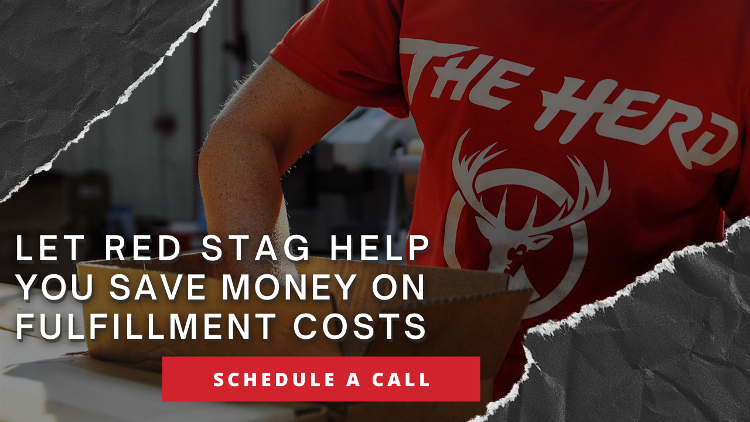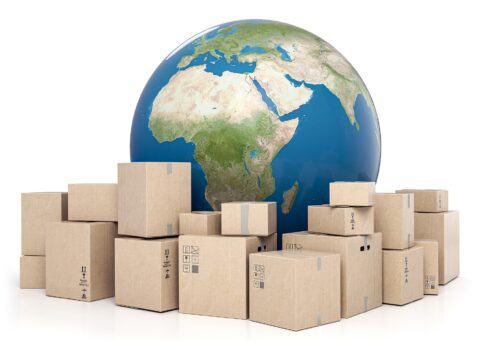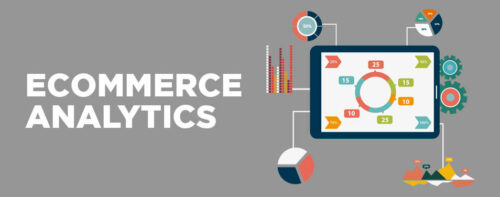Top-notch order fulfillment is the heart of every successful eCommerce company. Fulfillment cost is also one of the bigger operating expenses. Whether you do your order fulfillment in-house or use a fulfillment company, you may have hidden order fulfillment costs that hurt your bottom line. It’s essential to understand what goes into fulfillment pricing. That way, you can work with your 3PL to accurately calculate your fulfillment cost per order.
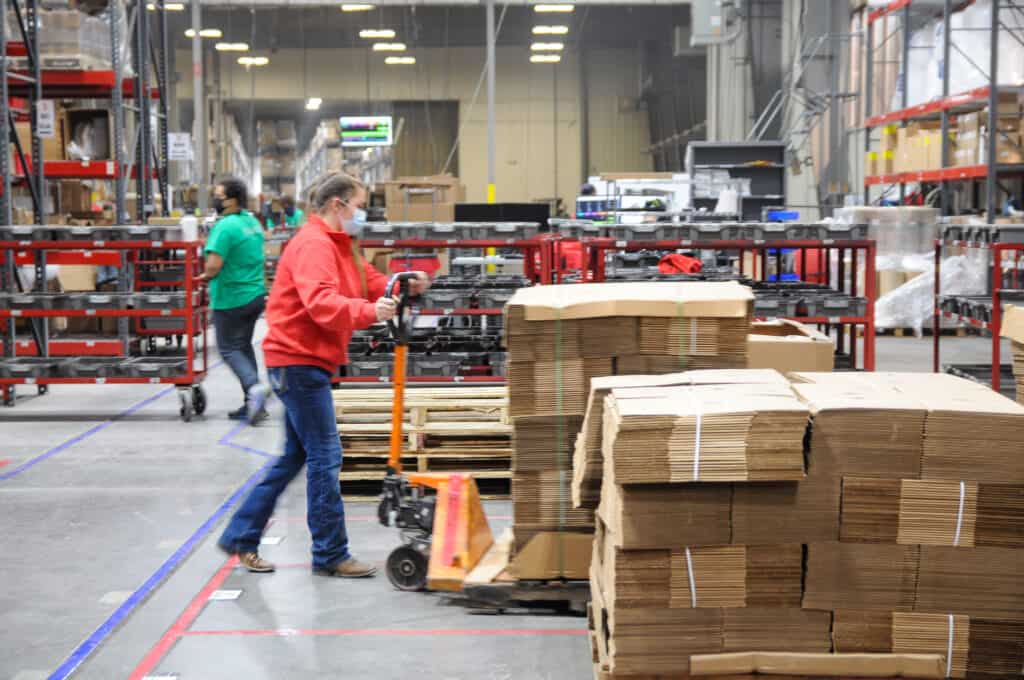
Why is it important to understand your fulfillment cost per order?
The retail price for your products needs to include all the costs you incur to get each order to your customer. The cost of shipping is the most significant part of your total fulfillment cost. If you include free shipping, you need to add that into the pricing for your products.
It’s important to break down the fulfillment costs outlined below: receiving, warehousing, and pick and pack fees. Most of your orders won’t be returned, but you need to factor the cost of returns into your prices as well.
Then there are hidden fulfillment costs. These can include order minimums and account setup fees. The inventory shrinkage cost is easy to overlook, but it’s crucial to include it in your total fulfillment cost and the average cost per order.
To determine your cost per order, pick a set time period. It can be the last month, quarter, or year, depending on your order fulfillment volume. Calculate how much you paid for order fulfillment costs and fees. Add in the price, if any, of lost or damaged inventory. Then divide that total by the number of orders you shipped. That is your fulfillment cost per order.
How much do order fulfillment services cost?
There are several different elements of fulfillment pricing. Some of these charges are per month, and some are per order.
For eCommerce businesses that do fulfillment in-house, consider labor costs, warehouse rent, insurance, packaging, shipping cost, and returns processing.
It’s important to understand the cost per order when you are outsourcing your order fulfillment. Here are the fulfillment fees that add up to your order fulfillment costs.
Receiving
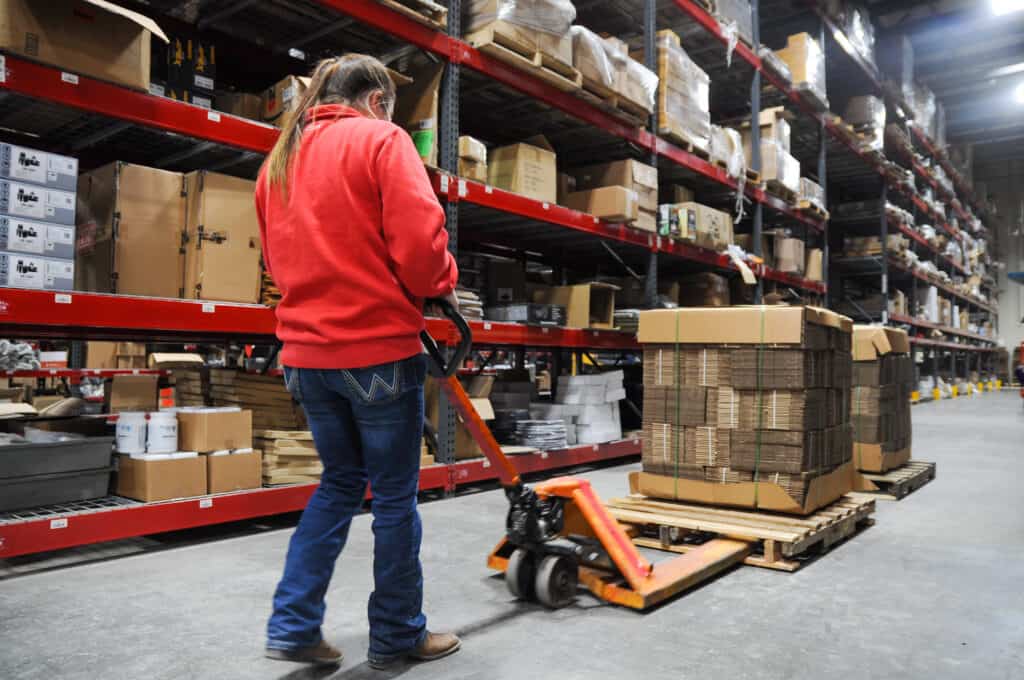
Receiving is bringing inventory into the fulfillment center. Most (but not all) fulfillment companies charge intake fees. For example, Red Stag Fulfillment charges per pallet for inbound merchandise.
The receiving charge includes more than unloading shipments. When your products arrive at the warehouse, they are entered into inventory and moved to the shelves.
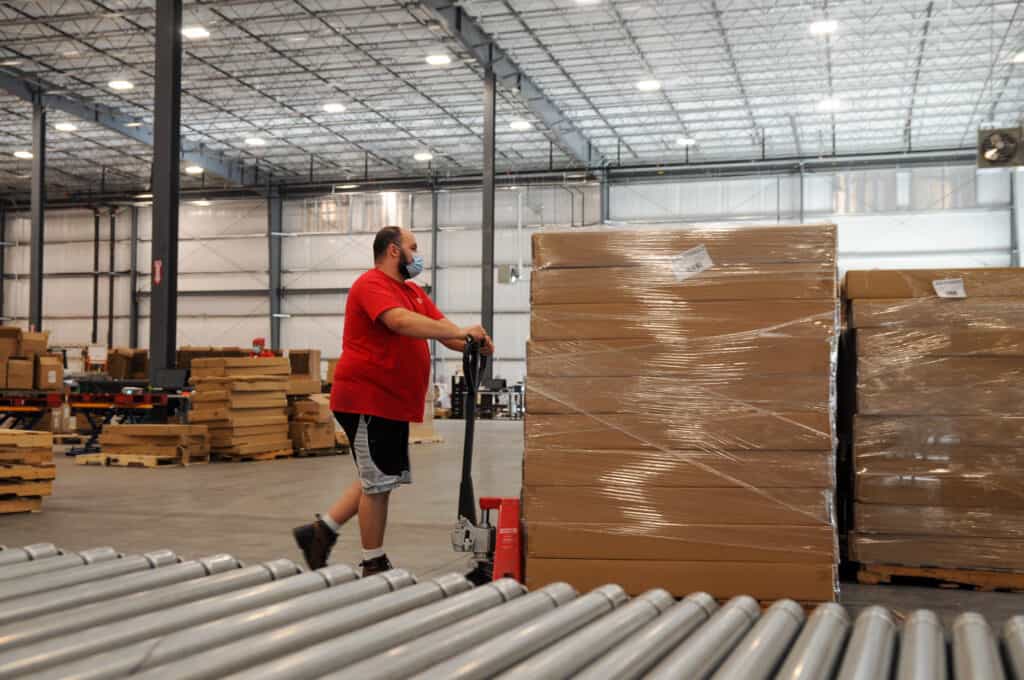
Your fulfillment costs for receiving may vary depending on how the products arrive. Factors that can affect your fees include:
- Special storage requirements. This includes items that are hazardous or require immediate placement in cold storage.
- Hand unloading vs. palletized. It’s generally easier to move pallets around the warehouse. If your products come in a floor-loaded container that has to be unloaded by hand, you may incur additional charges.
- Assembly or kitting. If your products arrive needing light assembly or kitting, this is a special service. Kitting and assembly are an extra charge. Kitting adds value to your products and can reduce your operating costs. Many third-party fulfillment logistics companies, including Red Stag Fulfillment, provide this service. Kitting charges can be per hour or per item.
Warehousing costs

Warehousing is the storage of your products at the fulfillment center. Your storage fee will be based on how much shelf space your products need. Many warehouses charge for storage space per cubic foot. You’ll pay for storage per month.
When you do your fulfillment in-house, your warehouse is a fixed fulfillment cost. Your overhead is the same each month all year. However, when you get fulfillment services from a 3PL, you pay only for what you use. Saving on storage fees is one of the big advantages of using a 3PL.
- Some products need special handling and storage. These can incur higher storage fees.
- Temperature-controlled storage. Food items may need cold storage or to be kept in a freezer. Even some nonperishable products require climate control.
- Perishable food items. This category includes shelf-stable food products that have expiration dates. If the fulfillment center needs to track expiration dates on outbound shipments, you might incur an additional charge.
- Lithium-ion batteries. The batteries that power everything from cell phones to electric bikes may require special handling under some circumstances.
- Hazardous materials. Some products, particularly combustible items, may have special storage and handling requirements for safety.
- Oversized products. Items that are particularly large or heavy will usually cost more to store. This includes anything that needs a double pallet. Products over 48 inches or 50 pounds fall into this category, too. That’s because OSHA requirements mean that these large items require two people to lift them.
Pick and pack costs
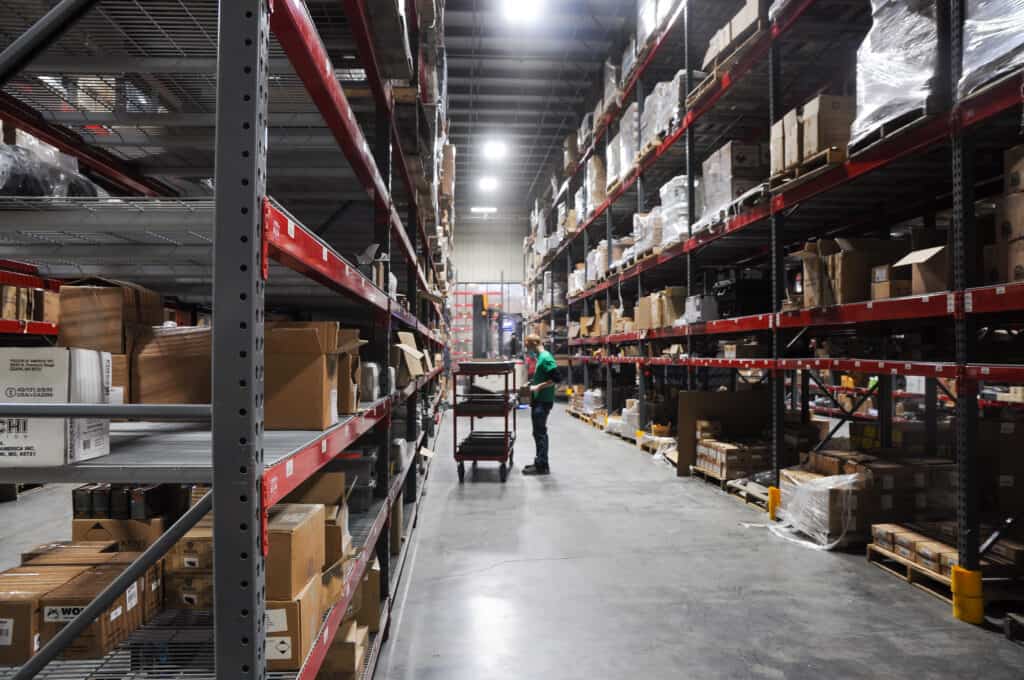
Pick and pack is the process of taking items off the shelves to fill your customers’ orders. This fulfillment cost is charged per order. Most fulfillment companies charge a set fee for the first item in each order, then a smaller fee for each additional item. For example, the first item might be $2.50, and each additional item $0.30.
Picking and packing charges also include the cost of the box to ship each order. If your products can ship in the original product packaging, you will save money on packaging.
Shipping
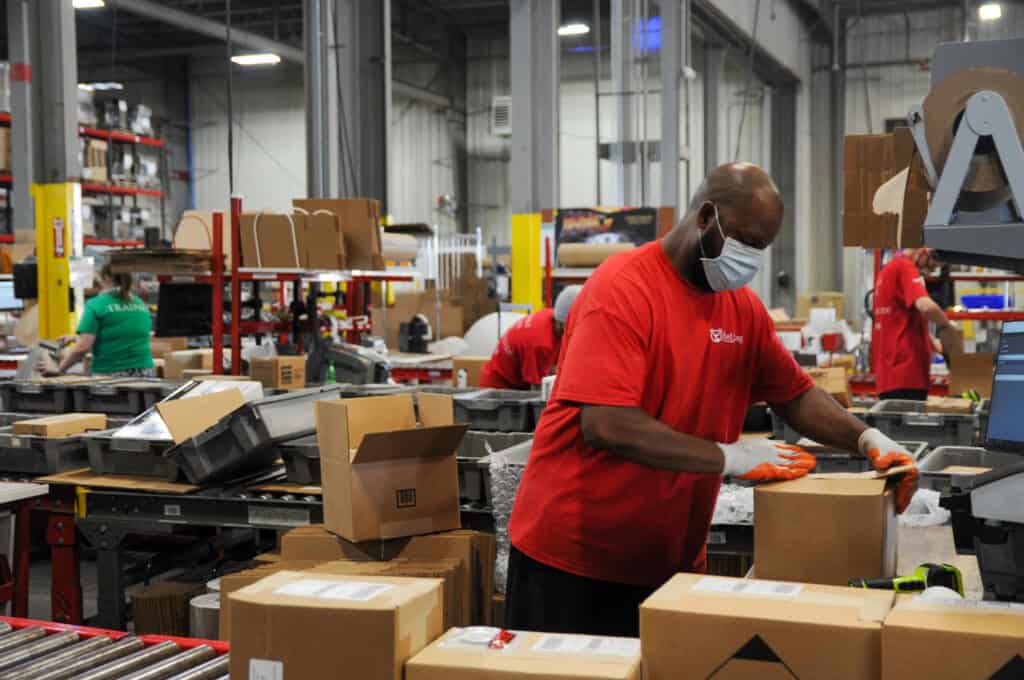
ECommerce shipping is the biggest fulfillment cost. Shipping cost per order depends on a range of factors:
- Whether you use FedEx, UPS, or USPS for shipping
- How many shipping zones the package has to travel through
- Fragile products may require special handling, which can increase the cost to ship per order
- Oversized items can incur dimensional (DIM) weight charges
- Whether you’re shipping individual orders vs. LTL freight
- Shipping discounts
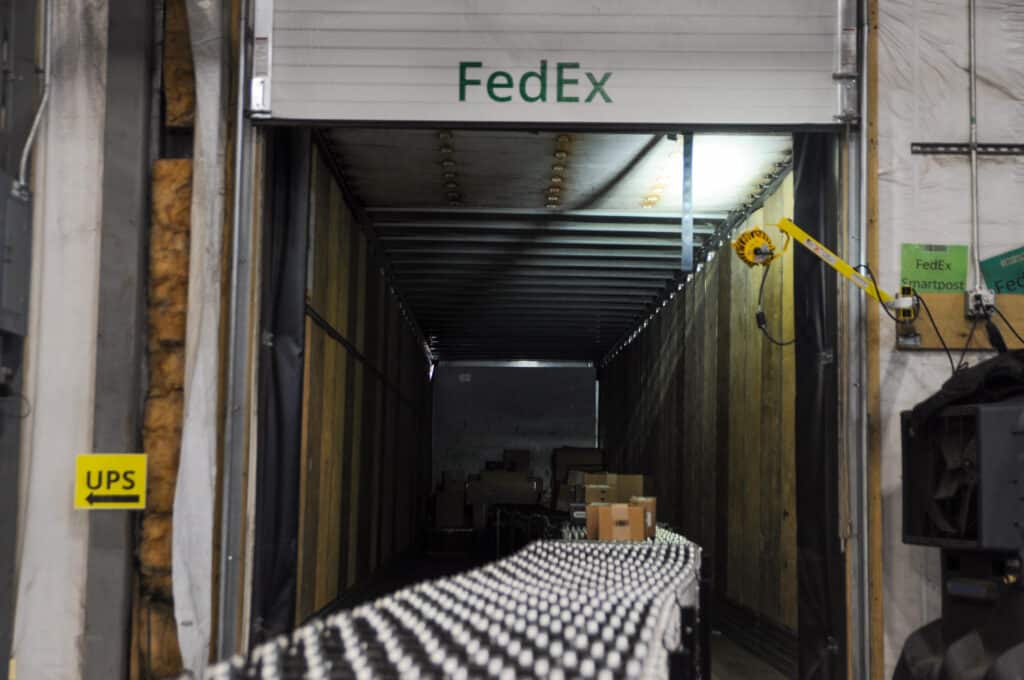
If you’re a volume shipper, you may be able to negotiate volume discounts on shipping rates from your carrier. At Red Stag Fulfillment, we ship a high volume of orders for multiple clients. That allows us to get favorable shipping rates and DIM factors.
Red Stag shipping discounts are based on order volume. So, as your eCommerce business grows, your shipping costs per order go down.
Returns

It would be nice if your return rate were zero. But returns are a fact of life in eCommerce. Your fulfillment costs will include fees for return processing. This can consist of receiving, evaluating returned items for damage, and restocking. Add a fraction of the cost of returns when you calculate your fulfillment cost per order.
How to think about fulfillment costs
When you look at fulfillment companies, it doesn’t make sense to just shop around for the lowest fulfillment costs. You can get fulfillment pricing estimates from different companies and compare. However, the cost per order won’t give you an accurate picture of the total value of your fulfillment.
Fulfillment isn’t just a way to ship orders. Fulfillment services offer benefits beyond putting products into boxes.
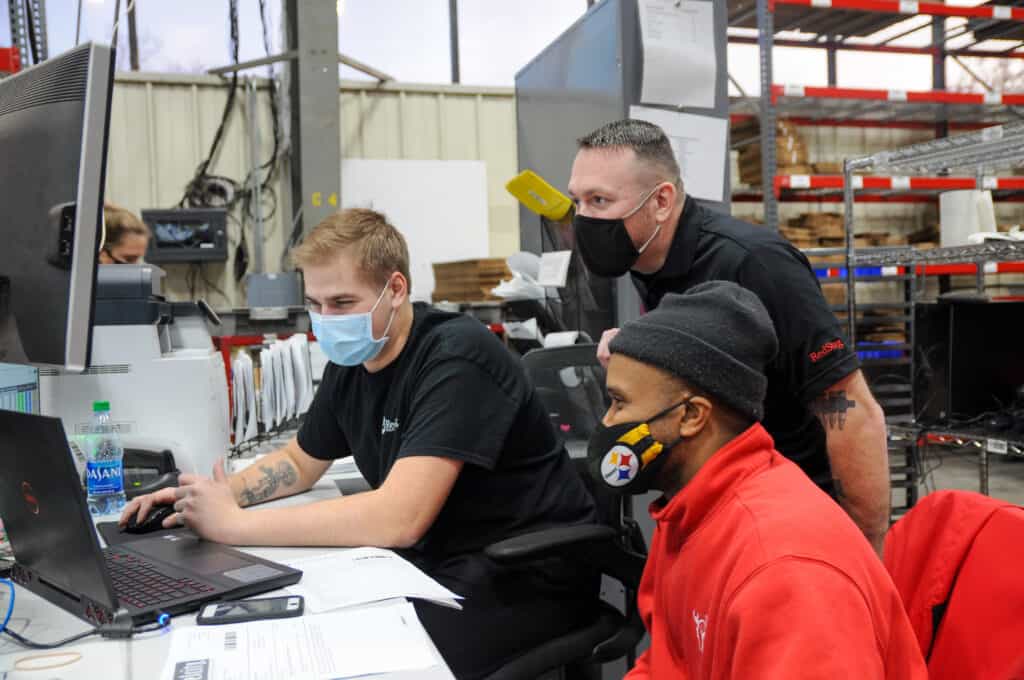
“If you get the right partner for fulfillment, they’re going to solve the problems that led you to seek out a 3PL in the first place,” says Chris Molitor, VP of Business Development for Red Stag Fulfillment. “You want a cost-effective solution, but you also want to consider the benefits the provider is offering you. Those can be subjective. It’s hard to monetize the headaches you have because of payroll or carrier issues.”
Effects of shrinkage and errors on cost per order
Order fulfillment plays a significant role in the growth of your business. Error-prone fulfillment services can drag your brand down. Conversely, excellent order processing can increase brand loyalty and help you expand.
That’s why Red Stag Fulfillment offers accuracy guarantees. “We are representing their brand,” says Molitor. “We want to give you that confidence that we are going to treat your business like you do.”
It’s essential to back up promises with performance. Red Stag Fulfillment has the highest accuracy rate in the industry. And we have a zero shrinkage policy: We pay you for any stock that is damaged on our shelves.
These guarantees don’t affect Red Stag’s pick and pack fees, but they reduce your cost per order. Accurate fulfillment means fewer returns because of mis-picked or mis-packed orders. Most fulfillment companies have a shrinkage allowance. That’s the percentage of your stock that they can lose or break per year without reimbursing you. That adds to your cost of goods sold and your cost per order. Zero shrinkage has saved some of Red Stag Fulfillment’s clients a significant amount on their fulfillment costs.
As you consider the total value of fulfillment services, don’t forget the hidden costs. These are fees that you might overlook when you’re considering your fulfillment cost per order. However, they can add up. Be sure you read the contract carefully so you’re not blindsided by these or other hidden fulfillment fees.
Account management
Some fulfillment companies charge a per month account management fee. Make sure you understand the fee structure before you sign a fulfillment contract. In cases like Red Stag, these fees may come with elevated customer service and support levels.
Monthly order minimums
If you are just starting your eCommerce business, you might not ship many orders per month. A monthly order minimum is a minimum charge you’ll have to pay per month, no matter how few orders you ship. If you ship above the minimum amount, this won’t affect your business.
Some of the best 3PL companies don’t have per month minimums. They would be good choices for a startup. Others, like Red Stag Fulfillment, have some flexibility in their monthly minimums.
SKU management
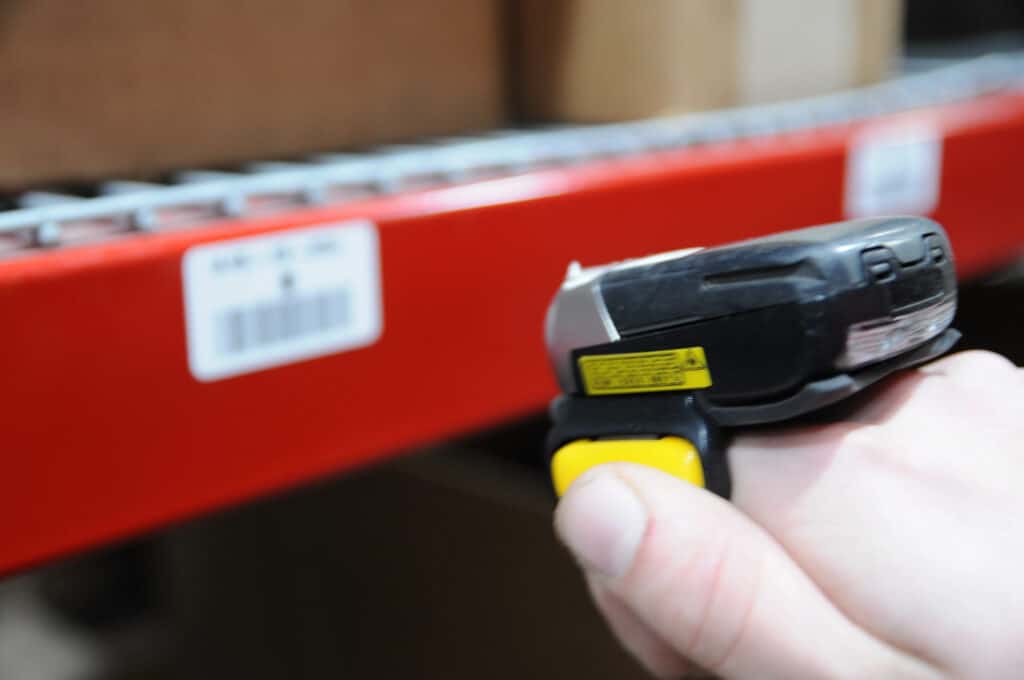
Your fulfillment company has to enter all your SKUs into its system. Some 3PLs charge a per month fee per SKU to maintain your stock numbers.
Facility fees
Fulfillment centers that have multiple warehouse locations may charge facility fees. This is a charge per facility per month for each warehouse you ship from.
Long-term contracts
Consider the length of the contract when you look at total fulfillment costs. A long-term contract could put you at risk of losing money. You could be stuck with a fulfillment provider that isn’t giving good service to your eCommerce business. Or you might have to pay a penalty to break the contract early.
“Red Stag Fulfillment doesn’t believe in long-term contracts,” Molitor says. “We want to earn your business every month.”
How much does Fulfillment by Amazon cost?
Fulfillment by Amazon (FBA) is one of the largest fulfillment services in the world. With dozens of warehouses around the country, FBA can deliver orders quickly. If you sell on Amazon, FBA is one way to offer Prime shipping to your customers.
Amazon’s order fulfillment fees for smaller items are comparable to the rest of the industry. For larger products, FBA will increase your costs. In fact, according to Molitor, “The bigger the item, the less FBA is a good option.”
Also, Amazon limits the amount of stock that you can store at its fulfillment centers. That could put a crimp in your business development. FBA can be an excellent option for some sellers. But it’s essential to weigh the fulfillment costs and the total value of fulfillment services when you compare fulfillment companies.
At Red Stag Fulfillment, we consider our clients our business partners. “We want you to succeed,” Molitor says. “Because the more you succeed, the more we succeed.”


